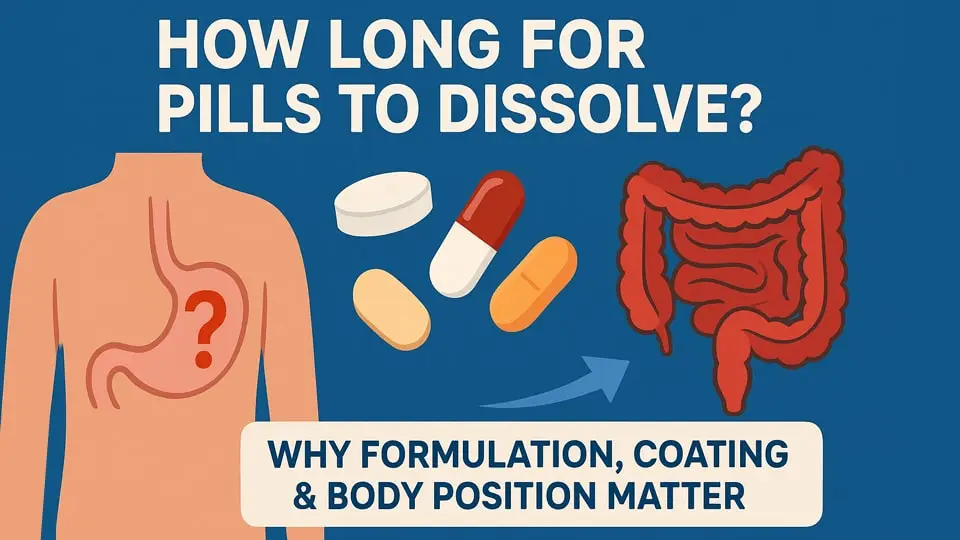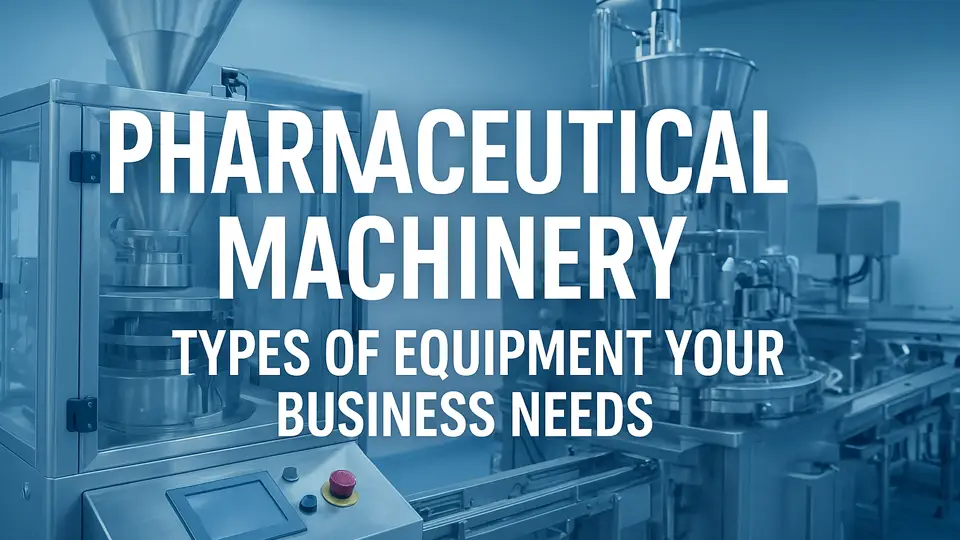
Finding a reliable pharmaceutical machinery manufacturer is crucial for any pharmaceutical company aiming to ensure product quality, 규제 준수, 생산 효율성. China is a major global hub for pharmaceutical equipment, with an expanding industry that meets diverse production needs. In fact, China’s pharmaceutical packaging equipment market generated about USD 1,131.6 million in 2024 and is projected to grow at a 9% CAGR, reflecting its broad manufacturing base and increasing technology levels. 하지만, with hundreds of pharmaceutical equipment manufacturing companies in China, buyers must follow a systematic process to identify the right supplier. The following tips guide international buyers and procurement managers in vetting and choosing the best Chinese pharmaceutical machinery suppliers.
Advanced automated production line in a Chinese pharmaceutical factory. China’s pharmaceutical manufacturing sector offers scale and variety: in 2024 China accounted for 17.4% of the global pharmaceutical packaging equipment market and is expected to lead worldwide by 2030. This growth reflects China’s large manufacturing capacity and investment in innovation. Buyers benefit from pharmaceutical manufacturing machines that are competitively priced, but they must carefully evaluate each manufacturer’s credentials. Start by defining your specific equipment needs (예를 들어, 태블릿 프레스, 캡슐 필러, blenders, or packaging lines) and look for manufacturers who specialize in those areas.

A top-quality Chinese supplier should comply with international standards. Always verify that the machinery meets Good Manufacturing Practice (GMP) guidelines, ISO 9001 quality management standards, and relevant regulatory certifications (such as CE marking for Europe or NMPA/FDA approvals for pharmacopeia compliance). According to the World Health Organization, GMP is the quality assurance framework ensuring that products “are consistently produced and controlled to the quality standards appropriate to their intended use”. 실제로, this means the equipment must be designed for cleanability (to prevent contamination), use materials approved for pharmaceutical use, and have documentation (IQ/OQ/PQ protocols, certificates of conformity) that ensure compliance. Asking for certificates of conformity and audit reports (예를 들어, ISO or CE certificates) helps confirm a manufacturer’s commitment to quality. Poorly designed machines that are hard to clean or lack proper documentation can lead to failed regulatory inspections and batch rejections.
Different Chinese pharmaceutical equipment manufacturing companies specialize in various processes. Examine each company’s pharmaceutical machinery list to ensure they build the types of machines you need. Common equipment categories include:
Bullet lists help compare offerings across suppliers. A reputable manufacturer will often provide catalogs or datasheets for each machine type. Pharmaceutical manufacturing machines should be listed with technical specifications (용량, power, 재료, certifications) so you can match them to your production capacity. If a supplier’s portfolio is very limited or only includes unrelated equipment, that is a red flag: they may not have the expertise in pharma-specific requirements.
Even before looking at equipment quality, confirm that the supplier is a legitimate manufacturing company. In China, every business must hold a valid Business License issued by the State Administration for Market Regulation (SAMR). Ask the supplier to provide a scanned copy of their license, which includes an official “Unified Social Credit Code.” Use online platforms like Qichacha (QCC) or Tianyancha to check the license number. These databases let you verify the company’s registered name, legal representative, date of establishment, and business scope[4][5]. A high registered capital is often an indicator of financial stability.
If possible, confirm the company’s physical address. Many Chinese suppliers list their factory location on Baidu Maps or Google Maps. A legitimate manufacturing facility will be in an industrial zone or manufacturing park, not just a residential apartment. Some buyers also hire third-party inspection agents in China to visit the factory and verify operations. FDIChina advises using maps or even visiting in person to avoid ghost factories[6]. 추가적으로, research the company’s online presence: a professional website, factory photos/videos, 소셜 미디어 (WeChat/Douyin), and B2B profiles (Alibaba, Made-in-China) lend credibility. Beware if a company is unwilling to share clear documentation or references. According to verification experts, “prices that are too good to be true” and a lack of an official website are common red flags. Legitimate manufacturers should eagerly provide references or case studies of past customers.
Experience matters in complex industries like pharmaceuticals. Prefer suppliers with a proven track record: companies that have built equipment for international clients or have been in business for many years. Industry trade publications or exhibition directories can hint at well-known Chinese manufacturers, but it is safer to gather references directly. Ask suppliers for contact details of overseas customers (ideally in the same sector) and then follow up to ask about their satisfaction with the machinery and service.
Another aspect is technical expertise. Some Chinese pharmaceutical equipment manufacturing companies have specialized R&D teams and engineering staff who can help customize designs or comply with strict regulations. 예를 들어, if you need equipment for sterile products, the company should demonstrate knowledge of isolator design and aseptic processing. Check if the manufacturer employs certified engineers or has partnerships with research institutes. Sometimes, collaboration with local universities or having patented technologies indicates higher technical capability.
Quality isn’t just about the initial machine performance; it includes long-term reliability and support. Key quality checks include materials and welding quality (stainless steel 316L vs 304 for contact parts), precise calibration of sensors and control systems, and compliance with API (활성 제약 성분) containment where applicable. Visiting the factory (or hiring an audit) allows you to see machining centers, welding stations, and quality control labs. Ask the factory to walk you through their manufacturing process: do they perform Pressure Decay Test, particle emission testing, or other inspection for each machine?
After-sales service is equally vital. A Chinese supplier should offer installation guidance (even if remote), operator training, and a clear policy for spare parts supply. Language and time zones can be barriers, so check if the company has English-speaking staff for technical support. Many top Chinese machine makers now have overseas service branches or appoint local agents. Before buying, clarify the warranty terms, response time for technical issues, and availability of quick shipment of replacement parts. These factors ensure the machinery will not be left idle for long in case of problems.

While Chinese machinery often has a lower purchase price, don’t base decisions on cost alone. Low prices can sometimes indicate thin margins achieved by cutting corners. Ask for detailed quotes from multiple pharmaceutical machinery manufacturers and compare line items: equipment cost, customization fees, shipping, 설치, 그리고 훈련. Check if the quote includes necessary accessories (like control panels, spare parts kit, 그리고 문서) or if they are extra.
Balance price against quality and service. A higher upfront price might include CE certification or extended support, which could save money in the long run. 반면에, if quotes differ drastically, revisit the specifications. Sometimes lower quotes are for smaller machines, or for non-GMP versions of equipment. Make sure each supplier is quoting on an equal basis (same production rate, same standards).
Payment terms are also a cost factor. Many Chinese suppliers offer flexible terms (예를 들어. 30% deposit, 70% upon shipping). For safety, use secure methods such as a letter of credit or an escrow service. FDIChina recommends escrow or Letter of Credit to avoid risks. Avoid 100% upfront payments until all verifications and negotiations are complete.
마지막으로, leverage events and networks to meet suppliers and see equipment first-hand. China hosts major pharma trade shows such as the China International Pharmaceutical Machinery Exposition (CIPM) and CPhI China. These expos gather hundreds of equipment manufacturers under one roof. Visiting a trade fair lets you examine machines on display, talk directly with engineers, and compare several brands in one trip. It also helps to see if a company’s booth looks professional and busy. After a fair, you can narrow down candidates for detailed follow-ups.

Outside of expos, industry associations and online communities can help. Some buyers find suppliers through referrals on LinkedIn groups or pharmaceutical engineering forums. 하지만, always verify any introduction using the steps above.
Through these methods—thorough research, strict verification, and careful comparison—you can find a Chinese pharmaceutical machinery manufacturer that combines quality, 규정 준수, 그리고 비용 효율성. Remember that while China has many capable pharmaceutical equipment manufacturing companies, due diligence is key. Verify credentials, insist on meeting GMP and ISO standards, and build a relationship with clear communication. This will help ensure you end up with a reliable supplier whose machines keep your production lines running smoothly.
A Chinese pharmaceutical machinery manufacturer commonly produces equipment for formulation, solid dosage processing, sterile systems, liquid/semi-solid lines, 포장 기계, and supporting systems (like conveyors, water treatment, CIP systems). You can refer to their pharmaceutical machinery list to verify exactly which units (예를 들어. 태블릿 프레스, 캡슐 필러, 물집 기계) they supply.
Buyers should request and check the supplier’s valid Business License (with Unified Social Credit Code), review registration via platforms like Qichacha or Tianyancha, confirm physical address, perform factory visits or third-party audits, and verify online presence (예를 들어. professional website, catalogs, verification reports).
A high-quality supplier should adhere to GMP guidelines, ISO 9001 for quality management, and international safety/engineering standards (such as CE, FDA, or equivalent). 추가적으로, documentation like IQ/OQ/PQ protocols, certificates of conformity, cleanability design, and material traceability must be in place.
Yes. Many pharmaceutical equipment manufacturers in China provide customization or engineering modifications based on your process parameters (배치 크기, output rate, regulatory class). It’s critical to discuss technical requirements early—materials, layout constraints, cleanability, control systems, 등.
Very important. Even the best pharmaceutical manufacturing machines may need maintenance or parts replacement over time. A credible manufacturer should offer installation guidance (on-site or remote), operator training, fast spare parts supply, clear warranty terms, and responsive technical support—ideally in English.
Selecting solely on the lowest quote can be dangerous—it may indicate cut corners in design, 재료, documentation, or service. The machine may not meet GMP or performance standards, or the supplier might underdeliver on after-sales support. Always compare specifications, certifications, and support terms, not just price.
Buyers can source manufacturers via:
• Industry trade fairs in China (예를 들어. CIPM, CPhI/PMEC China)
• B2B platforms (Alibaba, Made-in-China)
• Industry associations, LinkedIn networks, referrals
• Direct web searches for “pharmaceutical machinery manufacturer China”
그 다음에, narrow the list and perform the vetting steps above.
Request detailed, line-by-line quotations including machine cost, accessories, control systems, documentation, 테스트, shipping, 설치, 훈련, and spare parts kits. Ensure each quote is for equivalent GMP-compliant models. Compare total cost of ownership (not just CAPEX), and confirm payment terms (예를 들어. deposits, letters of credit).
Jinlu demonstrates many of the qualities above: they have years of experience, a broad product range covering packaging and associated pharmaceutical machinery, certifications to support quality and compliance, and established global export support. Their professionalism in communication, documentation, and customer service makes them a worthy candidate among pharmaceutical equipment manufacturers in China.
참고자료:
1.China Pharmaceutical Packaging Equipment Market Size & Outlook ——Retrieved from:Grand View Research
2.Pharmaceuticals Machinery Market Size and Share Forecast Outlook 2025 에게 2035 ——Retrieved from:Future Market Insights
3.China’s Pharmaceutical Equipment Market ——Retrieved from:Vogel / Market Insights Chin에이
4.GMP vs ISO: What’s the Difference? ——Retrieved from: Bachem


Learn what Alu-Alu blister packaging is, how it’s made, and why it provides unmatched moisture

알약 제제 방법 알아보기, 코팅과 심지어 신체 자세도 지속 시간에 큰 영향을 미칠 수 있습니다.
